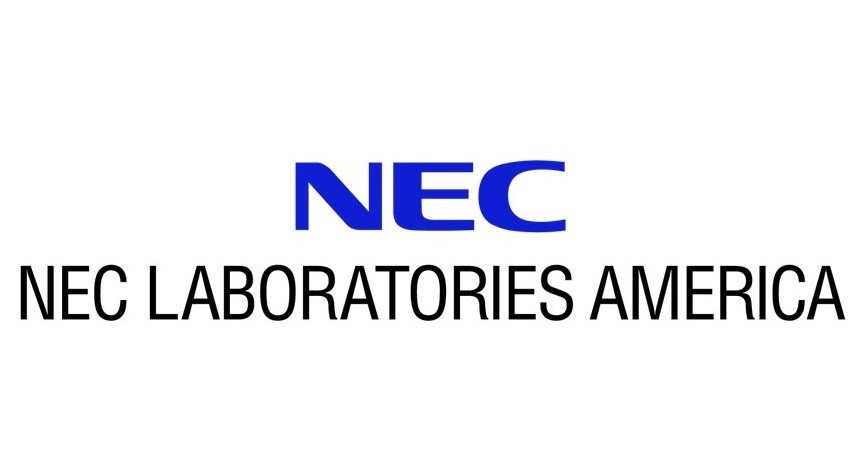 Giovanni Milione is a Senior Researcher and Business Incubation Lead in the Optical Networking & Sensing Department at NEC Laboratories America, Inc. (NECLA), where he drives the development of groundbreaking optical technologies that span communications, sensing, and computing. With a focus on translating cutting-edge research into commercial and societal impact, Dr. Milione bridges the gap between scientific innovation and business viability. At NECLA, his work includes pioneering research in space division multiplexing over optical fibers and free space, the application of machine learning to distributed acoustic sensing, and analog optical computing. His ability to lead both technical development and business incubation makes him a key contributor to the future of photonic and AI-enabled systems.
Giovanni Milione is a Senior Researcher and Business Incubation Lead in the Optical Networking & Sensing Department at NEC Laboratories America, Inc. (NECLA), where he drives the development of groundbreaking optical technologies that span communications, sensing, and computing. With a focus on translating cutting-edge research into commercial and societal impact, Dr. Milione bridges the gap between scientific innovation and business viability. At NECLA, his work includes pioneering research in space division multiplexing over optical fibers and free space, the application of machine learning to distributed acoustic sensing, and analog optical computing. His ability to lead both technical development and business incubation makes him a key contributor to the future of photonic and AI-enabled systems.
Dr. Milione earned his B.S. degree in Physics from Stony Brook University, his M.A. degree in Physics from CUNY (The City College of New York), and M.Phil. and Ph.D. degrees from CUNY The City College of New York/Graduate Center, where he was a National Science Foundation Graduate Research Fellow. He has authored over 100 publications and patents, with his work cited approximately 5,000 times. His research spans fundamental physics to applied technologies, including innovative approaches involving optical polarization, structured light, and optical communication and sensing systems. Among his notable contributions are advancements in real-time biometric authentication using photo-acoustic tomography, new techniques in high-speed and long-distance free-space and optical fiber communication using optical orbital angular momentum and multimode and multi-core optical fibers. His work in applying deep learning to distributed optical fiber sensing is pushing the boundaries for physical security.
In recognition of his achievements, Dr. Milione was selected to participate in the National Academy of Engineering‘s prestigious U.S. Frontiers of Engineering Symposium—an honor reserved for the nation’s top early-career engineers. Additionally, he was named Top 40 Under Forty by his undergraduate alma mater, Stony Brook University. He is also a U.S. Army veteran, having served in Operation Iraqi Freedom, and brings the same discipline and mission-driven mindset to his scientific and entrepreneurial endeavors. At NEC Labs America, Dr. Milione continues to lead projects that shape the future of optical and AI-enabled technologies, while fostering collaborations that turn laboratory breakthroughs into transformative real-world solutions.
Posts
We demonstrate high spectral efficiency transmission over 549 km of field-deployed single-mode fiber using probabilistic-shaped 144QAM. We achieved 41.5 Tb/s over the C-band at a spectral efficiency of 9.02 b/s/Hz using 32-Gbaud channels at a channel spacing of 33.33 GHz, and 38.1 Tb/s at a spectral efficiency of 8.28 b/s/Hz using 48-Gbaud channels at a channel spacing of 50 GHz. To the best of our knowledge, these are the highest total capacities and spectral efficiencies reported in a metro field environment using C-band only. In high spectral efficiency transmission, it is necessary to optimize back-to-back performance in order to maximize the link loss margin. Our results are enabled by the joint optimization of constellation shaping and coding overhead to minimize the gap to Shannon’s capacity, transmitter- and receiver-side digital backpropagation, signal clipping optimization, and I/Q imbalance compensation.
We propose a single-ended Brillouin-based sensor in elliptical-core few-mode optical fiber for multi-parameter measurement using spontaneous Brillouin scattering. Distributed sensing of temperature and strain is demonstrated over 0.5 km elliptical-core few-mode fiber.
We study digital signal processing techniques to optimize the back-to-back performance of large probabilistic shaped constellations. We cover joint optimization of LDPC and constellation shaping, CD pre-compensation, clipping and I/Q imbalance compensation.
Vast geographical distances in Africa are a leading cause for the so-called digital divide due to the high cost of installing fiber. Free-space optical (FSO) communications offer a convenient and higher bandwidth alternative to point-to-point radio microwave links, with the possibility of repurposing existing infrastructure. Unfortunately, the range of high-bandwidth FSO remains limited. While there has been extensive research into an optimal mode set for FSO to achieve maximum data throughput by mode division multiplexing, there has been relatively little work investigating optical modes to improve the resilience of FSO links. Here, we experimentally show that a carefully chosen subset of Hermite-Gaussian modes is more resilient to atmospheric turbulence than similar Laguerre-Gauss beams, with a predicted upper bound increase in propagation distance of 167% at a mode-dependent loss of 50%.


